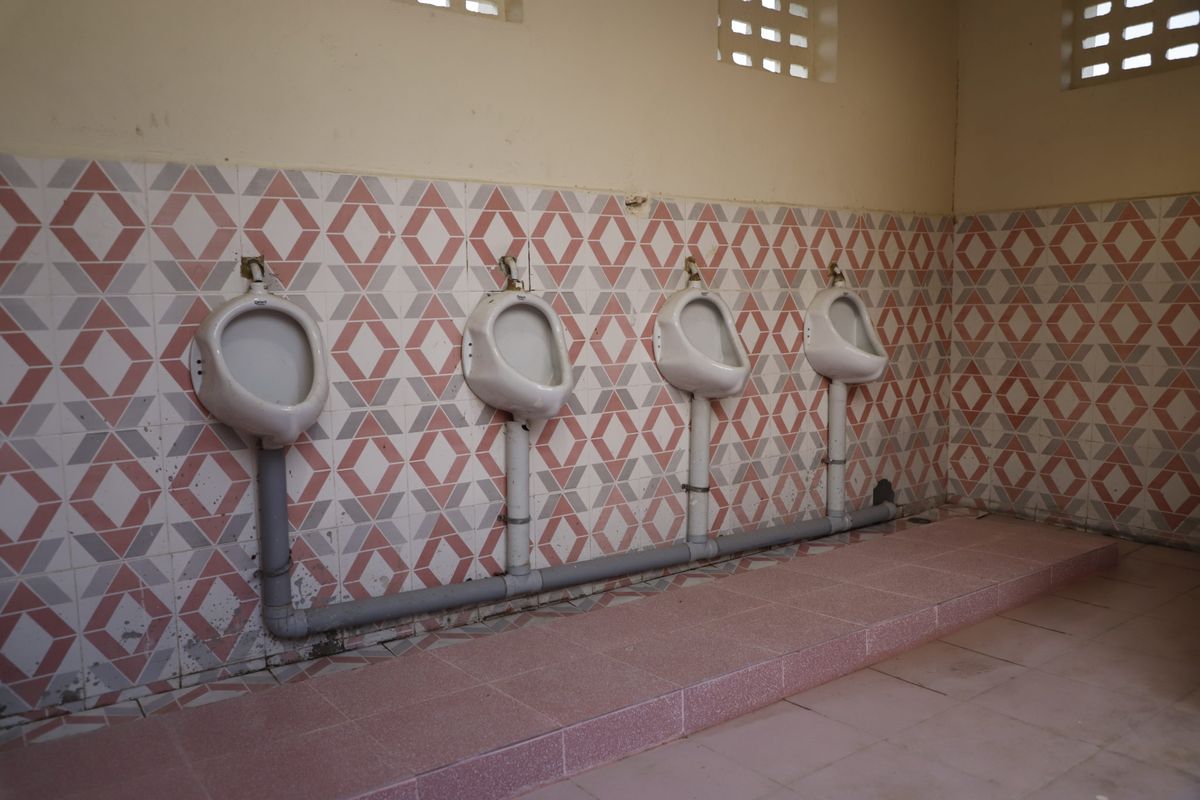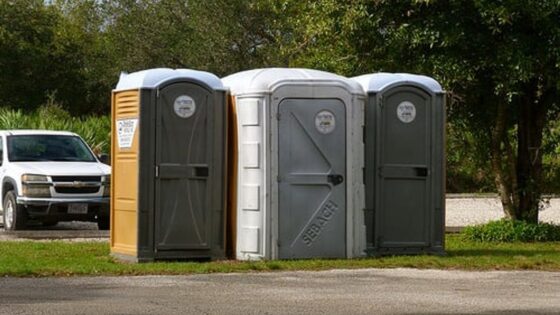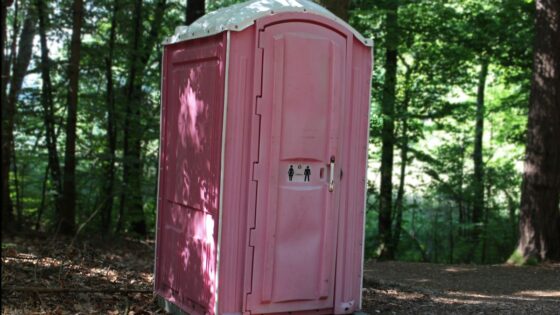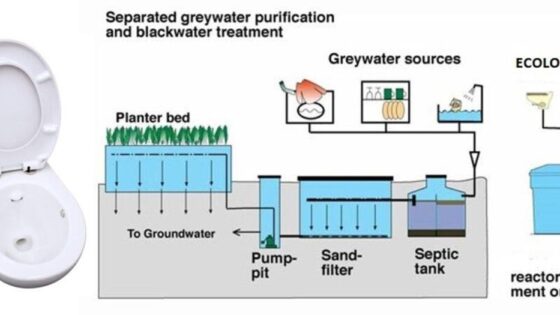The Throne Room: Porta-Potty Etiquette 101
Choosing the Right Spot for Your Portable Outhouse
Finding the perfect spot for a porta-potty is like a game of real-life Tetris. You want it close enough so workers don’t have to hike to the next zip code, but far enough to keep those aromas at bay. The trick is balance.
- Keep it accessible: A short walk, not a marathon.
- Think privacy: Not the main stage for a rock concert.
- Safety first: Away from heavy machinery zones.
Remember, a porta-potty’s place is important. It’s the little throne room that could, so give it the royal treatment it deserves.
And don’t forget, the right spot today might be the wrong spot tomorrow. Construction sites change faster than a chameleon on a disco floor, so be ready to move that potty palace when needed. Keep it rolling, folks!
Keeping the Stink at Bay: Ventilation and Cleaning
Let’s face it, nobody wants to visit a porta-potty that smells like a dumpster on a hot day. Good ventilation is key to keeping the air inside as fresh as possible. Think of it as giving the porta-potty a little breath of fresh air. And cleaning? Well, that’s just as important as the air we breathe.
Cleaning isn’t just a splash of water here and there. It’s a full-on attack against the grime and odors. Here’s a quick hit list to keep things smelling less like a monster’s armpit:
- Daily scrub-downs with disinfectant
- Weekly deep cleans, getting into all the nooks and crannies
- Immediate clean-up of any…uh, ‘accidents’
Remember, a clean porta-potty is a happy porta-potty. And a happy porta-potty makes for happy workers. It’s a win-win!
So, roll up those sleeves and get to work. Your nose (and everyone else’s) will thank you!
Stocking Up: Toilet Paper and Hand Sanitizer Galore
Let’s talk about the throne’s best friends: toilet paper and hand sanitizer. These are the VIPs of any porta-potty. Without them, well, it’s a recipe for unhappy campers.
- Always have a backup roll of toilet paper. You don’t want to be caught in a sticky situation!
- Hand sanitizer is a must. It’s like a superhero for your hands, zapping germs with a single squirt.
Remember, a well-stocked porta-potty is a happy porta-potty. Keep those supplies flowing like a mighty river.
Hygiene is king at a construction site. So, make sure you’ve got enough of these essentials to last through the day. It’s not just about comfort; it’s about staying clean and healthy. After all, nobody wants to shake hands with a germ party!
Dust Bunnies Be Gone: Tackling Airborne Grime
Wet Methods: The Splashy Way to Dust Control
When it comes to dust, water is like a superhero. It swoops in and sticks to those tiny dirt particles, weighing them down so they can’t fly around and cause a mess. Spraying water on dusty surfaces is a quick way to keep the air clean and your lungs happy.
But don’t go crazy with the hose! Use just enough to dampen the dust, not make a new swimming pool. Here’s a splashy tip: use a mist setting on your sprayer to cover more area without using too much water.
- Start with a light mist on dusty areas.
- Increase the water if the dust laughs at your first try.
- Repeat until the dust settles down like it’s taking a nap.
Remember, the goal is to trap the dust, not to create a mud wrestling event for the next break time.
Keep track of how much water you’re using. Too little and you’re just giving the dust a thrill ride. Too much and you’ll need a boat to get to your next job. Balance is key, just like in those funny cat videos where they walk on tiny fences.
Barriers and Fences: Not Just for Nosy Neighbors
Think of barriers and fences as the superheroes of the construction site. They leap into action to keep dust from going on a mini-vacation to places it shouldn’t. They’re like bouncers at a club, but for dust particles.
- Keep it in: Fences trap the dust on-site so it doesn’t dirty up the neighborhood.
- Safety first: They also make sure people don’t wander into areas where they could get hurt.
- Look sharp: A tidy fence means a tidy site, and that’s just good manners.
Visibility is key. You want to see through them enough to know what’s happening on the other side, but not so much that the dust slips through. It’s a fine balance!
Remember, a good fence makes a good neighbor, but a great fence keeps the site clean and everyone safe. That’s a win-win!
Personal Protective Gear: Because You’re Not a Dust Bunny
When you’re on a construction site, you’re not hopping around like a fluffy dust bunny. You’re working hard! And that means you need to suit up to stay safe from all the flying dust and dirt. Wearing the right gear is like having a superpower against grime!
Goggles keep your peepers safe, and masks make sure you’re not sneezing out more dust than a vacuum cleaner. Don’t forget your hard hat – it’s your personal shield from falling debris. And those high-visibility vests? They’re not just a fashion statement; they make sure you stand out more than a neon sign at night.
- Goggles: Protect those eyes!
- Masks: Keep the dust out.
- Hard Hats: Defend your noggin.
- High-Visibility Vests: Shine bright like a diamond.
Remember, staying clean and safe is no joke. Suit up like a construction superhero and keep that dust at bay!
Lunch Break Litterbugs: Managing On-Site Waste
Separation Anxiety: Recycling vs. Trash
At construction sites, the battle between recycling bins and trash cans is real. Recycling is like the superhero of waste management, swooping in to save the day by turning old stuff into new treasures. But sometimes, it’s hard to tell what goes where, and that’s when the trash can starts looking like a villain, gobbling up everything in sight.
Recycling should be super easy, right? Just follow these simple steps:
- Look at the item in your hand.
- Ask yourself, ‘Can this be used again?’
- If yes, into the recycling bin it goes!
- If no, the trash can is its new home.
Remember, every piece of waste has its place. Let’s keep those recyclables out of the trash’s belly!
But wait, there’s more! Not all recyclables are the same. Some are like distant cousins, not quite ready to hang out together. Here’s a quick cheat sheet:
- Paper and cardboard: BFFs in the recycling world.
- Glass bottles: They like to stick together.
- Plastic containers: Make sure they’re clean before they party in the bin.
- Metal scraps: They’re tough and ready to be reborn.
Sorting waste is like a puzzle, and who doesn’t love a good puzzle? Get it right, and you’ll be the eco-hero of the construction site!
The Daily Trash Walk: A Stroll with Benefits
Think of the Daily Trash Walk as a treasure hunt, but instead of gold, you’re bagging up trash! It’s a win-win: the site stays clean, and you get your steps in. Bonus points for not tripping over a soda can!
Trash isn’t just ugly; it can be downright dangerous. A clean site means fewer accidents and happier workers. Here’s a quick list to make your trash walks top-notch:
- Start early: Beat the heat and the rush.
- Pair up: Two sets of eyes spot more litter.
- Stay consistent: Make it a daily habit.
Remember, a tidy site is a safe site. Keep it clean, and you’ll keep everyone smiling.
And don’t forget, every piece of trash you pick up is one less flying into a fence or scaring a bird. Keep the site looking sharp, and you’ll be the hero with the trash bag cape!
Eco-Friendly Eats: Reducing Packaging Waste
Ever seen a sandwich wrapped like it’s a fragile gift? That’s a no-no at construction sites. Less wrap, more snack! Keep it simple with reusable containers. They’re like lunchbox superheroes, saving the planet one meal at a time.
- Bring your own utensils. Sporks are cool, right?
- Use a thermos for drinks. It’s like a cozy for your coffee!
- Cloth napkins. They’re not just for fancy dinners!
Remember, every piece of plastic you don’t use is a high-five to Mother Earth.
So, next time you pack your lunch, think of the turtles. They don’t like plastic salad, and neither should you!
Mud Wrestling Champion: Preventing Site Sludge
Gravel Paths: Your First Line of Defense
Think of gravel paths like the castle moat. They keep the muddy monsters at bay! Laying down gravel is like putting armor on the ground. It’s tough, it’s rugged, and it laughs in the face of mud. But not all gravel is created equal. You want the chunky kind that doesn’t get mushy when wet.
Gravel isn’t just for looks; it’s the unsung hero that saves your boots from becoming mud pies. Here’s a quick guide to making a gravel path:
- Measure the area where you want the path.
- Lay down some heavy-duty landscape fabric.
- Pour the gravel and spread it like peanut butter on toast.
Remember, a good gravel path is like a good joke – it should be well-timed and well-placed. Put it where people walk the most, and you’ll keep those pesky mud prints off your site.
Boot Scrapers and Wash Stations: A Mud-Free Zone
Imagine walking into your house with muddy boots. Your mom would have a fit, right? Well, construction sites don’t want that mess either! Boot scrapers and wash stations are like superheroes for your feet, keeping the mud where it belongs – outside!
Boot scrapers are the first step to a clean walk. They’re like a doormat’s tough cousin, ready to tackle the gunk on your boots. But they can’t do it alone. That’s where wash stations come in, splashing away any leftover dirt with a watery one-two punch.
- Step 1: Scrape off the big chunks of mud.
- Step 2: Wash away the small, sneaky bits.
- Step 3: Step into the site as clean as a whistle!
Keeping your boots clean isn’t just about looking good. It’s about safety and respect for the site. Clean boots mean less slipping, sliding, and trackin’ mud everywhere.
Remember, a tidy site is a happy site. And happy sites don’t grow mud monsters!
Drainage Plans: Because No One Likes a Swamp
When it rains, it pours, and nobody wants to work in a swamp. So, let’s talk about keeping those feet dry. Drainage plans are like magic spells that keep the water moving away from where you’re working. It’s all about smart planning and a little bit of digging.
- First, you need to figure out where the water should go. Look for the low spots and send the water there.
- Then, dig some trenches or put in pipes to make sure the water knows where to go. It’s like giving the water a map.
- Finally, check your work when it rains to make sure your plan is doing its job.
Remember, a good drainage plan keeps your site safe, dry, and less like a monster’s muddy bathtub.
The Invisible Menace: Keeping Germs at Bay
Handwashing Stations: The Battle Against Invisible Critters
Germs are sneaky little critters, always trying to hitch a ride on your hands. But don’t let them crash your construction site party! Handwashing stations are your superhero shields against these invisible invaders. Make sure they’re everywhere – like superheroes in a comic book city.
Soap is the magic potion that makes germs slip and slide away. Here’s a quick guide to keep those stations stocked and ready for action:
- Soap: The germ-fighting champion
- Water: Keep it flowing like a mini waterfall
- Paper towels: For drying those hero hands
- Trash cans: To toss the used towels, keeping the place tidy
Remember, a clean hand is a safe hand. Scrub like you’re searching for treasure, and rinse like you’re washing away a bad joke.
By keeping these stations well-equipped, you’re not just cleaning your hands; you’re saving the day, one wash at a time. So, roll up those sleeves and get to scrubbing – those germs won’t know what hit them!
Disinfectant: Your Secret Weapon in Germ Warfare
Think of disinfectant as the superhero of the construction site. It swoops in to zap germs and keep everyone healthy. But even superheroes need a good plan. Use disinfectant on tools, doorknobs, and tables to keep the bad bugs away.
- Step 1: Grab your trusty spray or wipes.
- Step 2: Target those high-touch areas.
- Step 3: Wipe or spray them down like you’re on a germ-fighting mission.
Remember, germs are sneaky. They like to hang out where people’s hands go all the time. That’s why we need to be sneaky too and clean those spots often.
Keep it simple: Spray, wipe, and repeat. That’s the mantra for a germ-free zone.
Disinfectants are not just for show. They’re the unsung heroes that keep the invisible bad guys at bay. So, let’s give a round of applause for those bottles and wipes working overtime!
Illness Outbreaks: Containment Strategies That Don’t Involve Hazmat Suits
When germs decide to throw a party at your construction site, you’ve got to shut it down fast! Keep those bugs from doing the conga with some smart moves. First, make a game plan that’s as tough as a two-dollar steak. Here’s the lowdown:
- Identify the icky: If someone’s feeling yucky, send them home to get better. No heroics needed!
- Clean like a boss: Wipe down those tools and surfaces like you’re erasing a bad drawing.
- Spread the word, not the germs: Tell your crew how to stay healthy with signs that even a kid could understand.
Remember, a clean site is a happy site. And a happy site doesn’t have germs that make you go ‘Achoo!’. So, keep those handwashing stations flowing and the disinfectant spraying. It’s like a superhero cape for your health!
Be the germ buster your site deserves. Zap those bugs with soap, water, and a little bit of elbow grease.









